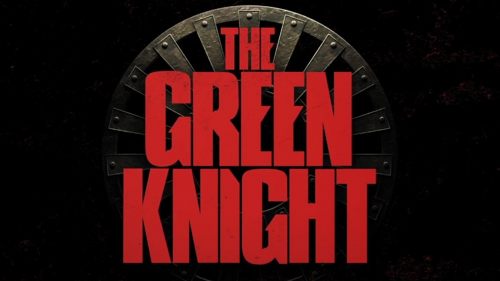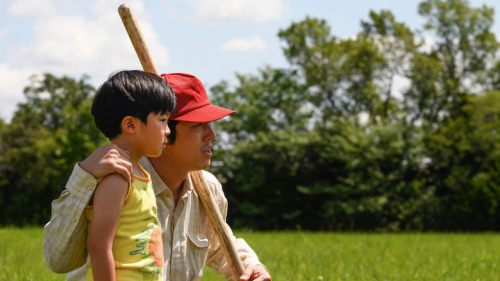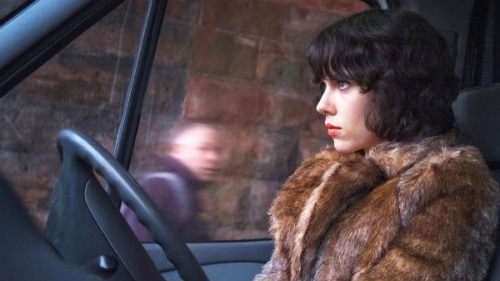Ari Aster: A MIDSOMMAR Night’s Scream
Midsommar is almost here. Get your tickets now!
For writer/director Ari Aster, the scariest thing about making Midsommar wasn’t just the critical and public anticipation for his follow-up to his indie smash Hereditary. First, he had to survive a breakneck production schedule that would put his sophomore effort—about a troubled American couple who visit an arcane pagan cult in Sweden—into theaters a year later. In the following interview, NYC-born Aster recounts the making of his horrific, dreamlike and unconventional Midsommar, which A24 opens this week.
Q: It’s only a year since your last horror film. Are you looking to be the genre’s Woody Allen, banging out a new film every 12 months?
ARI ASTER: I’m not sure quite how to answer that. The last two and a half years almost killed me, but I’m definitely very grateful to actually be making films. I spent 10 years trying to get something, anything, off the ground. And so, I’m just afraid to stop since it could be taken away from me at any minute.
Q: Is it true Midsommar was being planned even before Hereditary?
AA: Yeah. I wrote it five years ago, and it became clear while we were in postproduction for Hereditary that we might have the opportunity to make [Midsommar] that summer. And so, we needed to begin prepping film while we were finishing Hereditary. I was scouting and working on the [Midsommar] shot list while finishing postproduction on Hereditary, and we even began scouting for fields in which we could build the village while I was working with Colin Stetson on the Hereditary score and working on VFX. And so, the process of making Hereditary and the process of making Midsummer have kind of blurred, and it’s all just one big, long road that I’m just now coming to the end of.
Q: Would the film been possible if you didn’t have your own relationship breakup?
AA: Probably not, since that was the place that I was really writing from and that was my way into the material. So, I’m sure a movie would have been possible, but maybe not this movie.
Q: Wasn’t a different version of the film pitched to you from Swedish producers at some point? What was that concept like?
AA: I was approached by a Swedish production company that wanted me to write a horror movie set in Sweden. They wanted to give me a lot of freedom, and they just wanted me to do my thing, as long as it was sort of in the folk horror realm and set in Sweden. I was going through a breakup at the time and saw a way to marry the structure of a folk horror film with the structure of a breakup movie. And from there, I was able to write something pretty personal.
Q: Did the shadow of The Wicker Man loom large while you were in production?
AA: The only thing that looms large over a production is how little time you have and the threat of not making your days and not finishing the thing, especially when you had a schedule as accelerated as ours. But there’s no way to make a movie in the folk horror genre without acknowledging The Wicker Man, without contending with it. There’s no way around it. If anything, the fun of making this film was giving ourselves to the conventions of the genre while finding a way to deliver on expectations in a way that feels both inevitable and emotionally surprising.
Q: You say this is a horror film about codependence. How so?
AA: I don’t want to overexplain it because it’s there in the movie, but I can say that it’s about a codependent relationship that is non-functioning or dysfunctional. And you could say that one of the characters leaves a dysfunctional, codependent relationship to enter into a functional codependent relationship. But it’s there for you if you want to find it. It’s not very, very deep, but it’s there.
Q: Were there any sophomore film jitters going in or while shooting, especially coming off a hit movie?
AA: I didn’t have time for that while I was making the film. It was all just whether we’d be able to make it in time because the preproduction and production schedule were extremely squeezed. We had two months to build the entire village, and we were building it from scratch. Nothing you see in that community by way of the houses was there when we first found that field. That field was totally empty. So, we built everything from the ground up.
Q: Was the ritual cliff built or an existing landmark?
AA: Part of it was there, but we had to build a green screen ramp that we would then replace with CG. So, that is half-real, half-painted. That was probably the hardest sequence given the amount of material that we had to shoot in such a small amount of time and given the fact that we needed to build a 30-foot ramp on a pretty insecure surface. By the time we shot, it was very secure. We took huge precautions, but that took a long, long time. And it took a long time to scout for a location that might work. Ultimately, we found one that worked almost well enough, and that’s where the ramps came in, to make it really work for our purposes and give us the height that we needed. And then we had our stunt people on wires. We did as much as we could in-camera.
Q: The sets you built in Hungary were amazing. Did cast and crew live in them to get into character?
AA: No, no. Nobody was living in them, but they could have, they were sturdy. They were torn down right when we finished.
Q: The film takes place almost entirely in daylight. Was that a challenge making a scary film in bright light, the opposite of Hereditary?
AA: The challenges were pretty huge. On a logistical level, you’re chasing the sun every day. You’re depending on weather, which was nothing to depend on at all. And even just continuity is a huge problem because the sun never stays in one place. Plus, we could only shoot so long every day. We got about seven hours of actual shooting done every day, which is about half of what we had on Hereditary from day to day. So logistically, it was extremely challenging.
Q: Talk about the years of research that went into the film.
AA: While I was writing the film, I went deep into research, into Swedish midsummar tradition, Swedish tradition in general, Swedish folklore, Norse mythology, and I learned the runic alphabet. We were inventing our own language, which was a combination of runes and emotional hieroglyphs. Also, [production designer] Henrik Svensson and I traveled up to northern Sweden and visited a bunch of centuries-old farms and studied the houses. And, you’d find that in many of the rooms in those houses, from floor to ceiling, the rooms would be painted [with artwork]. And so, we drew from that, as far as inspiration is concerned. And then I did a lot of research into different spiritual movements and drew liberally from those and took liberties to suit the story. And now the film is just a big mélange of different influences. And then from there, a lot of invention.
Q: How much of it is based on actual traditions and practices?
AA: I’d say about 70 percent of the film is based on actual traditions, but from different sources. Like some things belong to England and some things belong to Germany. And there were a lot of things in the script that we didn’t include in the film that went even further.
Q: Does Christian get something of a raw deal? He really didn’t seem like such a bad guy.
AA: I leave that up to the viewer. You could certainly argue that the punishment doesn’t fit the crime.
Q: Did anyone try to rein in your running time? So many classic horror films get in and out in 90 minutes or so. Yours is probably one of the longest horror films in recent years at 2 hours, 20 minutes.
AA: Yeah, I was pushed to trim it as much as I could. But ultimately, A24 was extremely supportive. They encourage you to cut more than try to enforce anything. The original cut was 3 hours and 45 minutes. As long as it is now, it could be longer.
Q: How painful was it for you to actually trim almost an entire film from that initial version?
AA: We got to about 2 hours and 45 minutes as a cut, and that’s when I was ready to stop at a certain point. And so, from there, everything we cut to get to 2 hours and 20 minutes with credits became a very painful process, but necessary in a lot of ways. I plan to do an extended cut, but I wouldn’t call it a director’s cut. I approved both this version of the film and the 2-hours 45-minutes version.
Q: What’s next for you? In the new FANGORIA, you mention that you have nine unproduced scripts standing by.
AA: Well, they are not horror films. They belong to all different genres. But they are all dark in their sensibility given that I wrote them. I’ve got projects ready to go. I’m just sort of debating now which one’s next. I don’t have any other horror movies lined up, so I’m just hoping to move freely between worlds and make good movies. That’s the ultimate goal.



